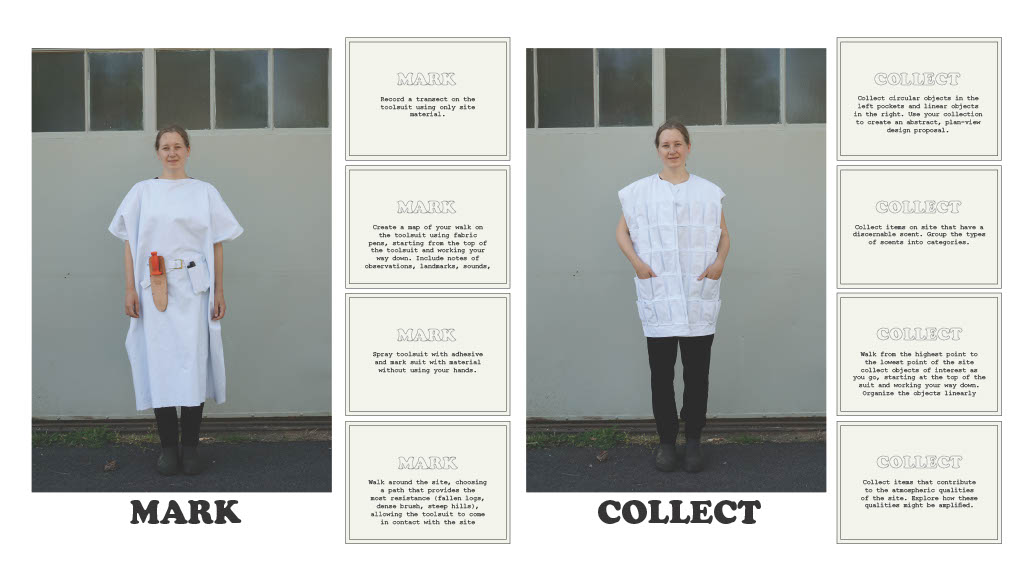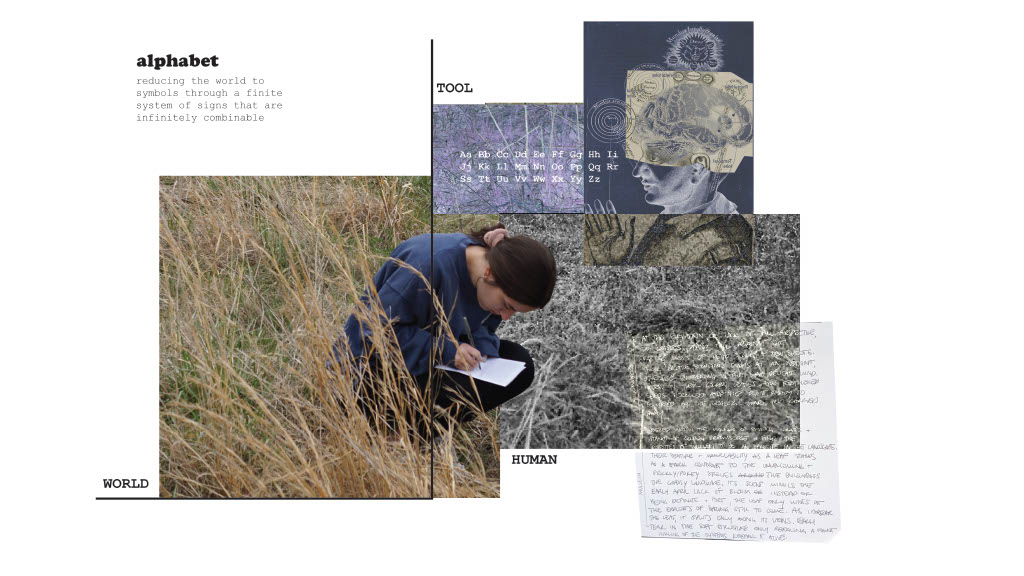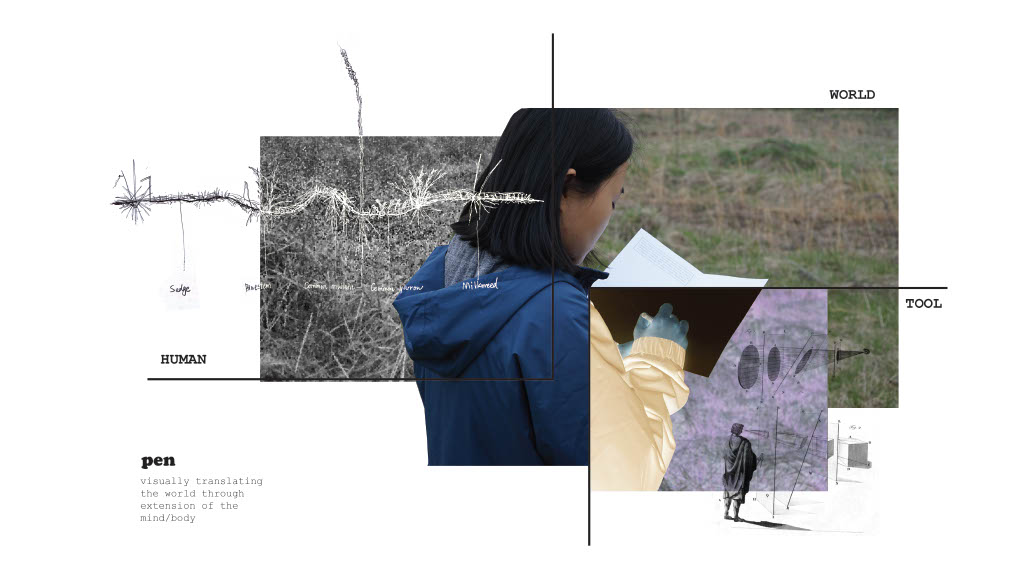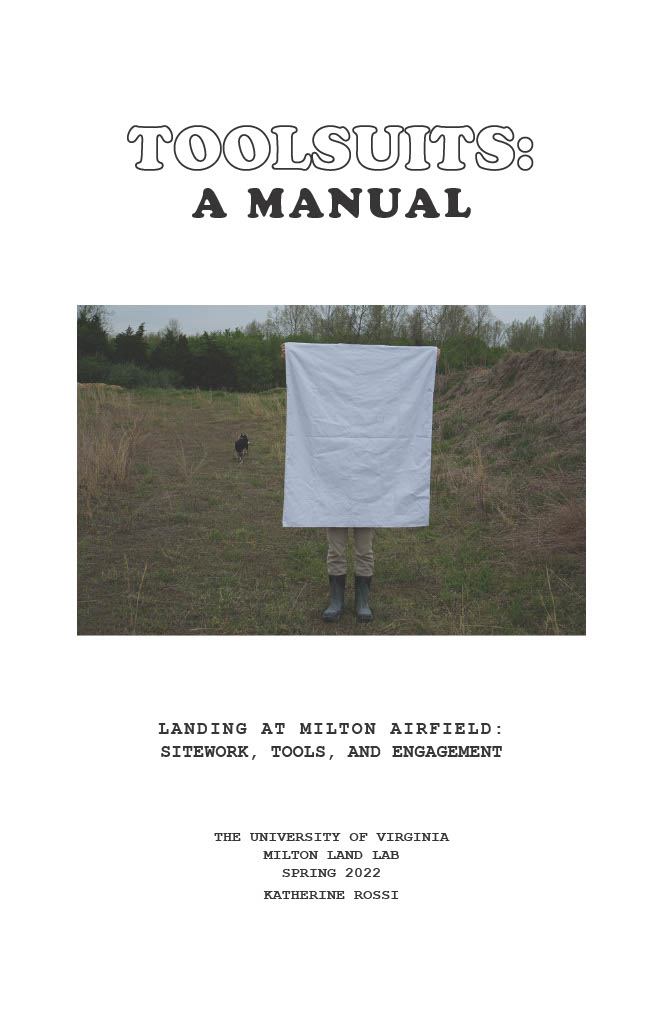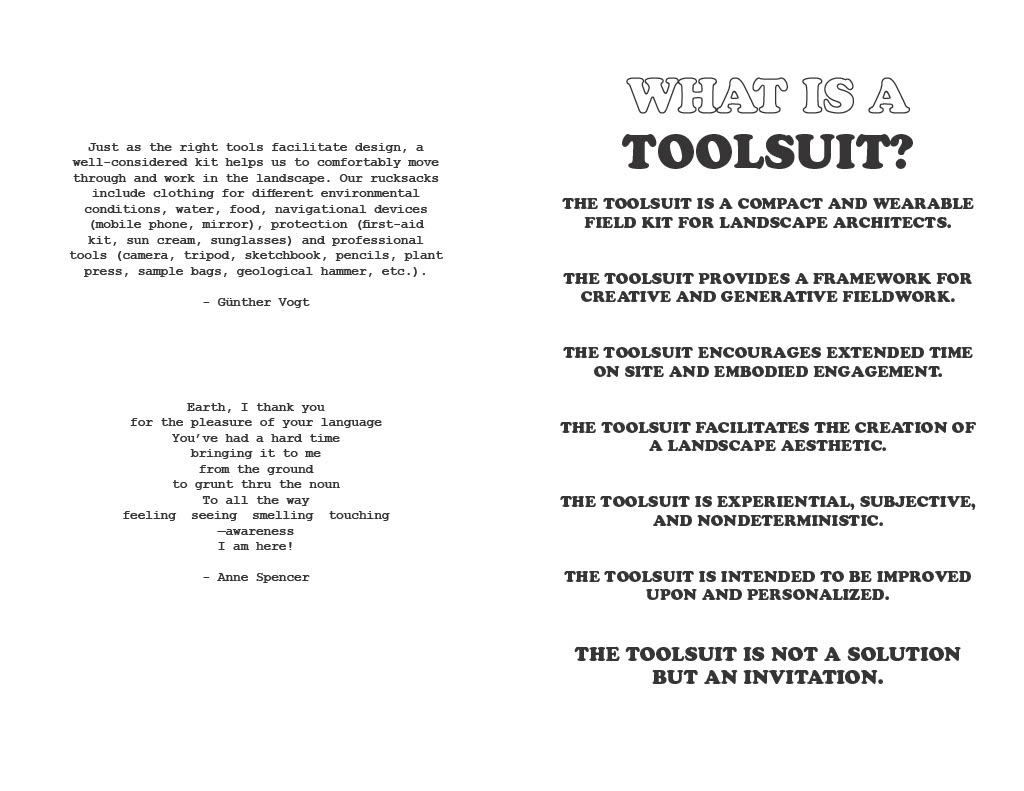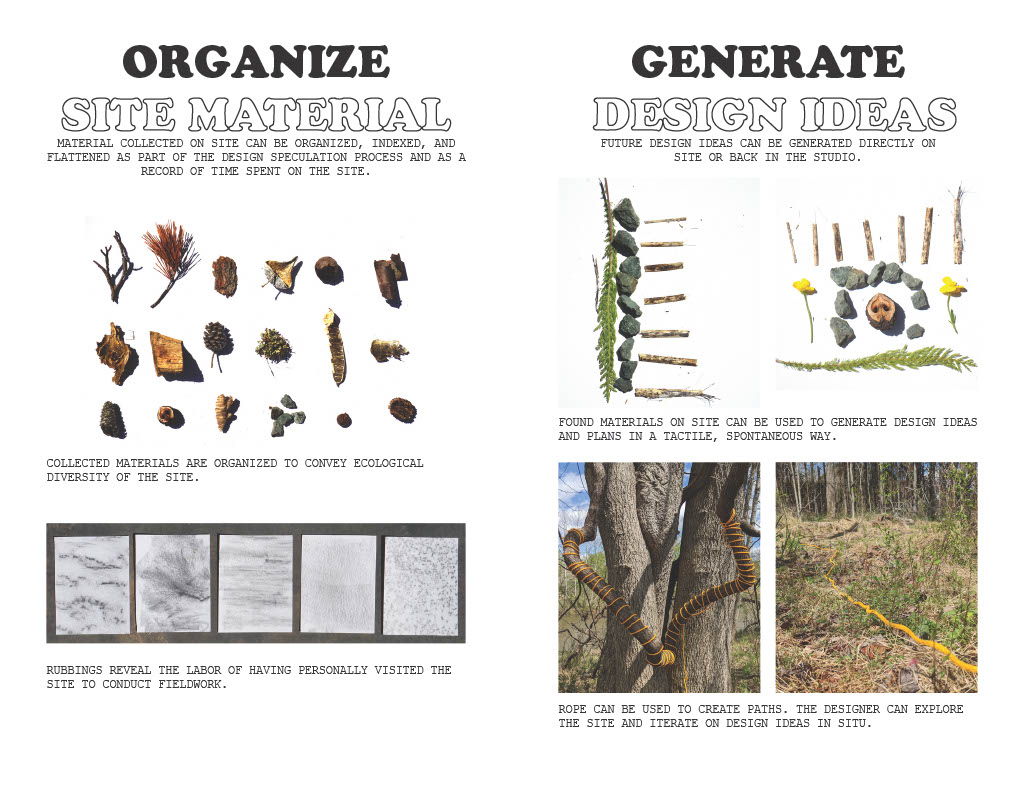Sitework, Tools, and Engagement
Katherine Rossi
The tools we use as designers for conducting sitework are non-neutral and embed certain assumptions into the land. Landing at Milton Airfield interrogates sitework tools through a phenomenological lens to understand how tools function as intermediaries between our body and the land and the ways in which this interaction shapes our perception of the site. Sitework tools vary in technological complexity and require different levels of mental engagement and physical presence. Tools also vary in the way in which they relate to the human body and the world - tools can be embodied, read, or interacted with. It is important to recognize how tools condition the way in which the designer views the site and conducts site research.
Throughout the semester, I have experimented with different types of tools and forms of sitework, developing an understanding of the tool’s role in mediating and recording the site and shaping my body’s relationship to it. This experience led to the creation of three “toolsuits” that are designed to engage designers with the site in an embodied and specific way while extending time spent on site. The toolsuits are a compact, and wearable fieldkit that directs the wearer’s actions towards embodied sitework. Toolsuits are meant to be speculative and generative, encouraging the wearer to slow down, reflect on the site, and record it in a site-specific way while developing novel and corporeal methods of working and engaging with the site. The toolsuit becomes a vehicle for organizing site material and generating future design interventions.
The toolsuits were created to empower designers to interrogate their tools and resulting fieldwork methodologies and encourage experimentation and personalization. The toolsuits force designers to approach their fieldwork with creativity and individuality with the goal of expanding their methodological practices while creating new landscape aesthetics and ways of knowing.
Throughout the semester, I have experimented with different types of tools and forms of sitework, developing an understanding of the tool’s role in mediating and recording the site and shaping my body’s relationship to it. This experience led to the creation of three “toolsuits” that are designed to engage designers with the site in an embodied and specific way while extending time spent on site. The toolsuits are a compact, and wearable fieldkit that directs the wearer’s actions towards embodied sitework. Toolsuits are meant to be speculative and generative, encouraging the wearer to slow down, reflect on the site, and record it in a site-specific way while developing novel and corporeal methods of working and engaging with the site. The toolsuit becomes a vehicle for organizing site material and generating future design interventions.
The toolsuits were created to empower designers to interrogate their tools and resulting fieldwork methodologies and encourage experimentation and personalization. The toolsuits force designers to approach their fieldwork with creativity and individuality with the goal of expanding their methodological practices while creating new landscape aesthetics and ways of knowing.

